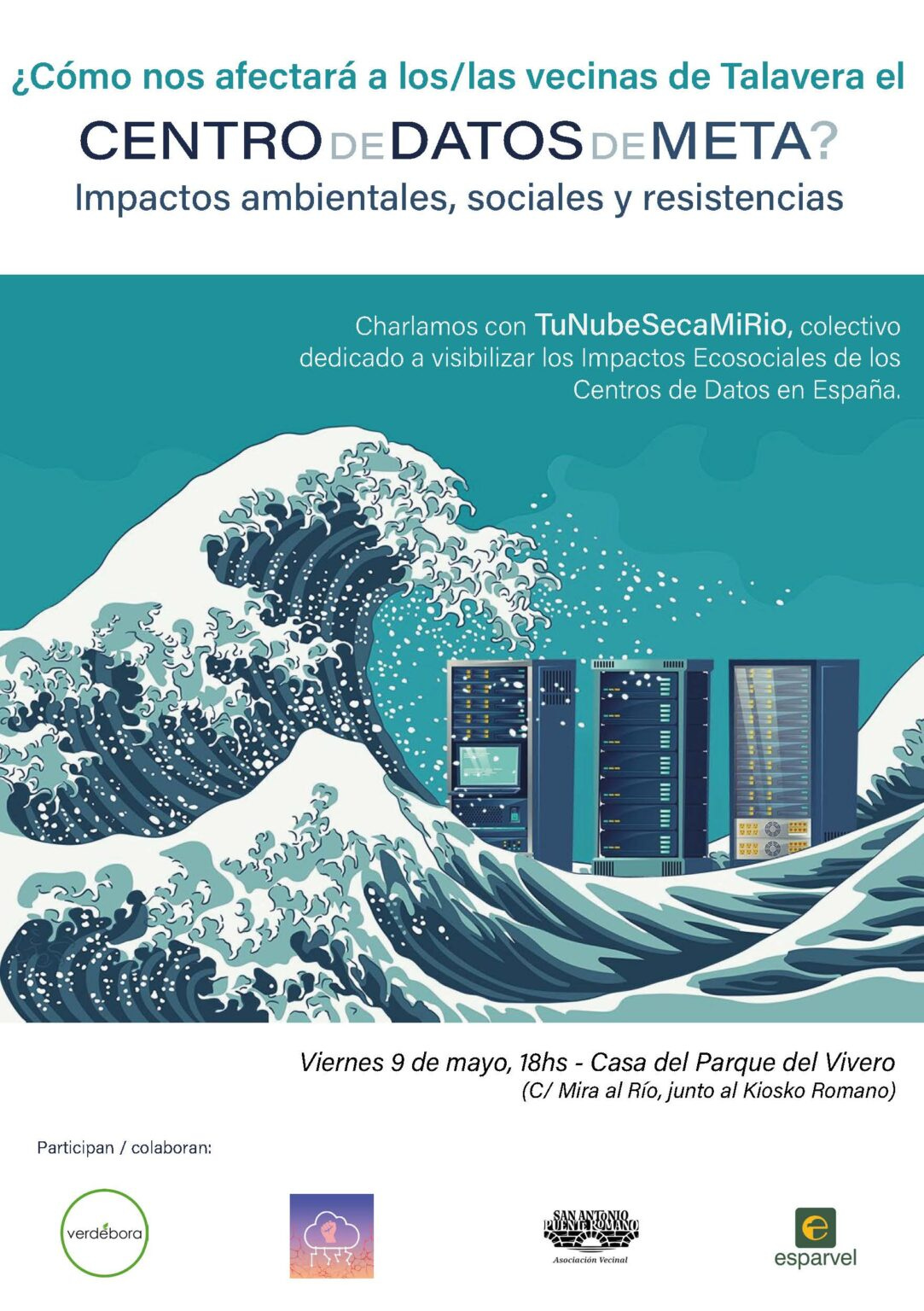
Remember when the tech revolution was all about memory? Neither did I, at least not until a news story on Amazon’s bigfoot data centers in Spain sent me down the rabbithole.
It all comes back with an analog rewind whoosh. Digital natives, you’ve got no idea. Way back before google was a verb and there was I-Anything, RAM was where it was at.
RAM standing for Random Access Memory, the industry acronym for the digital holy grail – maxing out everything information technology could do. RAM the going promotional shorthand for computer memory, full stop, the more the better. More RAM meant more processing speed. More RAM meant more data storage. Memory was the thing that made everything go.
FYI, young digiterati. We Neanderthal creatives called what we did word-processing. Here’s how it worked: you wrote stuff down with a word-processing program – WordStar, WordPerfect, Xywrite – on computer files that ran on a standard operating system. You named and saved your files for safekeeping on your big old desktop machine roughly the size and weight of a cathedral gargoyle. You saved and stored your work for next time, and it was all thanks to memory.
A lot of us had no clue how our words were processed, but we got the memory part. More RAM meant more room for memory, and that meant more stuff your machine could remember for you. It was all about how much you could squirrel away on your files and floppy disks, and how much you could have right there at your fingertips.
My crib notes here say that RAM always had as much to do with making all the basic programming run faster and better, but if you were in the word trade memory meant one thing alone. Memory was your file space, your storage capacity, your inventory and your library. Memory was your memory bank.

So much for the Stone Age, kids. Now we have the Cloud. The Cloud is where it’s at now, the Cloud that cloud computing built. It’s got the whole world in its hands.
It’s all about the Cloud now, and the Cloud above all is about the wholesale memory industry. Memory is what makes the Cloud the Cloud. Memory quantified in micro-chip bytes by ever-more exponential orders of magnitude, billions and billions of bytes. Memory codified as the grand unifying medium for stockpiling and pigeonholing every little byte-sized thing under the sun. No memory, no Cloud. Memory runs the show.
It’s all out there in the Cloud. The sky’s not even close to the limit. Memory bank? More like a space-time continuum of memory. Memory lanes from here to eternity.
It’s been that way for a while now. One day it was just out there, and it was already everywhere.
No one can really say when. As Antonio Regalado wrote in his 2011 story “Who Coined Cloud Computing?” for MIT’s Technology Review, even industry insiders can’t agree on precisely when the Cloud came to be called the Cloud. Still, Regalado’s sources were in no dispute over the tipping point: in and around 2006, Google and Amazon began staking claim on “cloud computing” as the new www order, an extremely online parallel universe where everyone would be “increasingly accessing software, computer power, and files over the Web instead of on their desktops.”
Sound familiar? The rest is the history of how we got here. The rest is the story of the Cloud that memory made.
Never mind who first called it the Cloud. Tantalizing trivia question, but a moot point. Regalado’s reportage helps fill in the timeline and flesh out the takeaway. By the October 2011 issue of Technology Review, it was already all in the works. “Cloud computing still doesn’t appear in the Oxford English Dictionary,” Regalado noted. “But its use is spreading rapidly because it captures a historic shift in the IT industry as more computer memory, processing power, and apps are hosted in remote data centers, or the ‘cloud.’ ”
“The cloud” was upon us, ready or not. The Cloud was here to stay, and all it had to lose was its scare quotes. The Cloud was a buzzword whose time had come. The Cloud was the next high-tech frontier, and it was up for grabs. Money quote:
“The cloud is a metaphor for the Internet. It’s a rebranding of the Internet,” says Reuven Cohen, cofounder of Cloud Camp, a course for programmers. “That is why there is a raging debate. By virtue of being a metaphor, it’s open to different interpretations.” And, he adds, “it’s worth money.”
Take it from the co-founder of the Cloud Camp. It was already in the works back then. It’s 2011 and Cloud Camp is in session. Cloud computing is coming of age as a branding campaign. The Cloud is a metaphor and it’s worth money. Memory is what makes the Cloud the Cloud, and it takes all kinds of money to keep that much memory up and running.
Let’s not forget what we’re really talking about when we talk about the Cloud. It’s a cute name for the big business of digital data storage. It’s Big Data’s booming market in commodified memory, memory containing multitudes. It’s a metaphor for all those terrabytes and petabytes of micro-chip memory on legions of servers in gargantuan data-centers all across the planet. No big-time capital investment, no Cloud. The Cloud doesn’t come cheap. Follow the money.
Follow the money nowadays, and it’s liable to take you somewhere like the Aragon region of north-east Spain. That’s where Amazon has sited three mammoth data-centers in recent years and plans to build three more just as colossal. This is where I first came in.
One news story grabbed me. A report in early April by the UK Guardian and the investigatory non-profit SourceMaterial, under the headline “Revealed: Big tech’s new datacentres will take water from the world’s driest areas.” It sounds like a scoop because it is. “Datacentres’ locations are often industry secrets,” the article states, but look here, the research team has mapped the globe and done the math:
Datacentres, vast warehouses containing networked servers used for the remote storage and processing of data, as well as by information technology companies to train AI models such as ChatGPT, use water for cooling. SourceMaterial’s analysis identified 38 active datacentres owned by the big three tech firms in parts of the world already facing water scarcity, as well as 24 more under development.
It all tracks, even if you don’t have the bandwidth to wrap your head around it all. Vast warehouses, networked servers, the remote storage and processing of data – that’s the Cloud getting bigger and faster all the time, everything it takes to keep all that memory going. All that memory takes energy. Energy like you wouldn’t believe, it says here. Electricity consumption ramping up in megawatts, same as for running power plants.

It all tracks, and we haven’t seen anything yet. Demand is going up and up. It says here it’s all down to AI. It’s all those gabby generative AI chatbots. If you’re building a bot that’s going to keep generating more and more chat, you’d better be scaling up with more and more chips and servers if you’re expecting the Cloud to make it all go. Anything less, and AI would be MIA.
So now the arms race is on. The SourceMaterial researchers report that project plans on the books for the three IT behemoths alone – Amazon, Google, Microsoft – will make for a 78% increase in Cloud-hosting compounds worldwide. What’s more, the new ones coming online will be maxxing out power grids at far higher rates.
That’s the AI X-factor at work, make no mistake. “All data centers consume significant amounts of energy,” a McKinsey bulletin from October 2024 explains, “but AI-ready ones are especially demanding because of their high average power densities – the energy consumption of servers in the racks.”
Talk about a phrase that brings the Cloud down to earth. Servers in the racks – more and more all the time, sucking up more and more power. Also: more and more water, lots and lots of water. Giant data-centers need to be outfitted with giant cooling systems, or else all those racks of servers are sure to run hot and fritz out.

So runs the main through-line of the Guardian’s April article: just when demand for more and more is going up and up, “Amazon, Google and Microsoft are building datacentres in water-scarce parts of five continents.” Here a data-center, there a data-center, some on the scale of football stadiums and jumbo-jet hangars. Everywhere another hulking data-center, or you can kiss the Cloud goodbye.
Cut to Spain’s landlocked Aragon region running up to the western Pyrenees, where Amazon’s plans to expand its data installations twice-over have come under fire over whopping projected spikes in water and energy consumption. The coverage reads like a case study crossed with a cautionary tale, detailing how Aragon’s semi-arid climate and recent history of heat waves make it a glaring global-warming hotspot. By the sound of it, the Cloud is starting to hit the fan.
The story grabbed me, but it was one subhed that really got me. It surfaces just about midway through the article in display-font boldface, marking the segue from the international big picture to the spotlight on Amazon in Aragon:
“Your cloud is drying my river”
What’s this, a proverb? Some mystical saying? A line from a Lorca poem? Turns out it’s a direct quotation. Turns out to be the name of a grassroots organization:
“They’re using too much water. They’re using too much energy,” said Aurora Gómez of the campaign group Tu Nube Seca Mi Río – Spanish for “Your cloud is drying my river” – which has called for a moratorium on new datacentres in Spain due to water scarcity.
Your Cloud Is Drying My River. It sounds better in the mother tongue: Tu Nube Seca Mi Río. The translation software on the group’s home page renders it in English as Your Cloud Dries My River. Even more pithy, even more zip. Their Hello World went live on 17 April 2023:
Hello! We are a collective founded to raise awareness of the eco-social impact of data centers. We emerged from the Meta/Facebook initiative to create a large data center in Talavera de la Reina (Toledo, Spain).
Tu Nube Seca Mi Río. It sounds better in the mother tongue, but it doesn’t seem to be cutting it as a wake-up call. The collective has called for a moratorium on new data-centers in Spain, but so far no dice. They’ve put out stats predicting that Amazon’s power grid will use more electricity than the entire region currently consumes, but the juggernaut rolls on. It may not be a lost cause yet, but it’s getting there.
Your Cloud, My River. When you put it that way, it’s not a fair fight. My River is no match for Your Cloud, in degree or in kind. It’s a nice turn of phrase, but it’s not so hot as a call to arms. It’s got the ring of a gnomic epigram, but it might be a better fit as a woeful epitaph.
Tu Nube Seca Mi Río. Your Cloud Dries My River. A collective and a cause, a catchphrase in Spanish calling attention to “the eco-social impact of data centers.” A play on words, a registered URL in the form of a metaphor, a poetic twist on a marketing metaphor.
Not half-bad as such things go, but probably too oblique by half to be a bang-up motto. Jumps off the page, but hard to see it catching fire as an eco-social campaign slogan. Hits a nerve, but don’t expect to spot it on a placard or a T-shirt any time soon.
Could be something’s getting lost in the translation. Looks like it’s going nowhere as a rallying cry. So be it, but for my money it’s a disarming found aphorism and a cunning counter-metaphor to remember.
I didn’t think so at first, but it kind of snuck up on me. It jumped off the page, but that’s not why it’s stuck in my head. I’m not saying it’s an All-Star metaphor all by itself. I’m not holding it up as a prime specimen of epigrammatic wit and wisdom. It’s the way those five little words flip the script on cyberspeak. It’s the unlikely little handhold you get for coming to grips with the Cloud.

Your Cloud Dries My River. A metaphor to remember, a metaphor to remind us what we’re really talking about when we talk about the Cloud. A needling little metaphor calling out a loose and baggy metaphor, My River blowing Your Cloud’s cover. A gadfly metaphor meant to keep metaphor honest, a metaphorical turn of the screw. Mi Río calling Tu Nube ’s bluff, My River holding Your Cloud’s feet to the fire.
A metaphor to remember, a reminder that metaphor can only be taken so far. Somewhat artless but not at all gratuitous, a metaphorical comeuppance as a kind of public service, given how it’s all too easy now to forget that the Cloud has been trademark technobabble all along. A metaphorical corrective to metaphorical malpractice, My River ratting our Your Cloud as a supersize-me entrepreneurial euphemism so full of itself that it better get real.
I know, I know, it won’t make a lick of difference. Your Cloud, My River, no contest. Your Cloud is large and in charge, and you can cry me My River. Won’t work, not a fair fight, but that’s precisely why I’m banking on it as a metaphor for what memory is good for. From where this hard-wired geezer sits, My River is just the thing for teasing out what Your Cloud really means in the long run.
Once more with feeling. Your Cloud Dries My River. If that just sounds like Old Man River yelling at the Cloud, yank out those ear-buds and listen up.
I hear a timely reminder that above all else the Cloud is a metaphor for memory, just in case you’ve forgotten. A metaphor for computer memory, digital-data storage on a scale beyond the wildest dreams of pipsqueak RAM bits. A marketing metaphor, a metaphor for the globe-straddling memory industry, industry lingo for the whole memory-industrial complex.
I hear My River telling Your Cloud not to forget it’s not merely a metaphor, it’s a type of extended metaphor known as a metaphysical conceit. I hear the sound of metaphor holding metaphor to account. I hear it hit the moving target with an aphoristic zing. The Cloud is a metaphor, but its brutalist infrastructure is all too literal. Your Cloud is a metaphor, but My River is the real thing.
I hear it as the signal, not the noise. I’m taking notes. I hear it saying the Cloud is a metaphysical conceit with feet of concrete. I hear it saying follow the money, count the megawatts, do the math on the servers in the racks.
Five little words in Spanish, a terse declarative sentence fit for a postcard or a tweet. Reads like the love child of a meme and an apothegm, a laconic earworm calling out a nebulous euphemism. No match for the might of the algorithm empire named after the longest river on Earth, but still punching above its weight. Too little too late to turn any tables or tides, but just quick enough on the uptake to tell us to mark its words.
A bit on the clunky side in English, but it still does the trick. It floats like a haiku and hooks like a hashtag. It’s a piece of wordplay and a word to the wise. It works every time. #Your Cloud Is Drying Out My River. It’s a clapback, it’s click-bait, and down the rabbithole I go.
Here’s what it says to me across all platforms. It says the Cloud is a metaphor for memory that cuts both ways. It’s a metaphor for what the uber-geeks call Memory Virtualization, and it’s a metaphor for what the hard-hats call the Physical Plant. A metaphor for endless realms of information at your fingertips, and a metaphor for vast tracts of infrastructure you can see from space. For clicks that work like magic charms, and for links that run on monster power grids.
Your Cloud is drying My River, and it’s doing a number on me. It’s a bug in my ear now, rasping that the dark side of the Cloud is a feature, not a bug. It’s telling me the tech revolution is still all about memory, except that memory isn’t what it used to be. It’s much much more, and it’s so much less. More and more of it for saving everything, less and less of it for savoring anything. More and more memory, and more’s the pity.
Whatever you want on instant recall, it’s all there in the Cloud now. It’s all out there somewhere in the great virtual yonder. The Cloud is where everything lasts forever and where everything goes to die. Used to be oblivion meant the state you’re in when all’s forgotten. Now it’s looking like where you’re at when everything can be rebooted.

#Your Cloud Is Drying My River. #Cloud to River: Drop Dead. Edgelord above, where is all this going? Does memory have a future?
It’s all up to the Cloud now and it’s not looking good. Memory has seen better days. Memory isn’t what it used to be, not by a long shot.
Yo, chatbots – aggregate this. Bet you remember when it was a RAM’s RAM’s world, but memory wasn’t born yesterday. Go all the way back and the creation story will blow your circuits. Memory ruled. Memory was a gift. Memory was an art.
An art, I kid you not. One of the high arts of antiquity, an art first mastered by the earliest oral poets. They didn’t write down their lines, they filed them away in their heads. Their metrics were their mnemonics. There was no such thing as print. There weren’t any alphabets yet. Whatever you had to say or sing about anything in tarnation, you had to get by heart.
Memory was an art from the jump and get this. In the beginning memory was already a metaphor. Memory was literally the name Mnemosyne, the personification of memory, Titan goddess and mythic badass. You can look it up or you can let AI do it for you:
In Greek mythology, Mnemosyne was the Titan goddess of memory and the mother of the nine Muses, the goddesses of the arts and sciences. Zeus, the king of the gods, fathered the Muses with Mnemosyne, signifying the connection between memory and inspiration.
There you have it, straight from the chatbot’s mouth. Mnemosyne, meaning Memory. Mother of all nine Muses, divine matriarch of all the arts and sciences. She launched the whole enterprise. No Memory, no knowledge. No Memory, no truth and no beauty. Memory was the mother of it all and don’t you forget it.
Or maybe just give it a rest. The art of memory has left the building. It’s about as lost as an art can get. When the divinity named Memory gets rebranded as a computational commodity, you can be pretty sure that in every other sense it’s history. Mother Memory, we hardly knew ye.

Then again, what good would it do to give up the ghost? Hard pass. That bug in my ear won’t quit. Your Cloud is drying up My River, but my found maxim is taking your memory industry to task. It’s not a fair fight, but wordplay’s been known to find a way. Metaphor still has some mojo in it yet.
Good thing too, or else it’s the end of memory as we know it. Memory and metaphor are in it together. Remember, memory has been a metaphor since Homer’s rosy-fingered dawn of time. Don’t forget, the Cloud is a metaphor for outsourced memory, memory mass-produced ex-machina. A metaphor for an infinite inventory of information, all the information that put the I in IT. That makes the Cloud a metaphor for Mnemosyne in name only.
Same word, but not the same thing at all. The Muses’ ma didn’t stand for anything as piss-poor as mere information, whatever that means. Memory was her name and she was synonymous with inspiration. You might even say memory was originally inspiration technology.
There’s no putting the Cloud back in the bottle, but let’s hope it’s still a little too soon for memory to become its own memento mori. The way things are going, the day is coming when machine-memory will be the only kind of memory that means anything. Memory will still be a metaphor, but nothing remotely like it used to be. It will be all information and no inspiration. It will be servers on the racks all the way down.
Tu Nube Seca Mi Río. #Your cloud is drying my river. Famous last words, sounds like, but if you ask me it’s just the thing for getting a grip on what memory was good for in the first place. It’s telling me to remember that metaphor and memory have always been in it together. It’s telling me that memory is the mother of all metaphors, and don’t you forget it.
A replica of the Manchester “Baby” computer at the Science and Industry Museum in Manchester, England. Photo: Mark Waugh/Alamy. Source: Joanna Goodrich, “The Birth of Random-Access Memory: The Manchester “Baby” was the first electronic digital computer to store a program.” IEEE Spectrum (21 July 2022).




